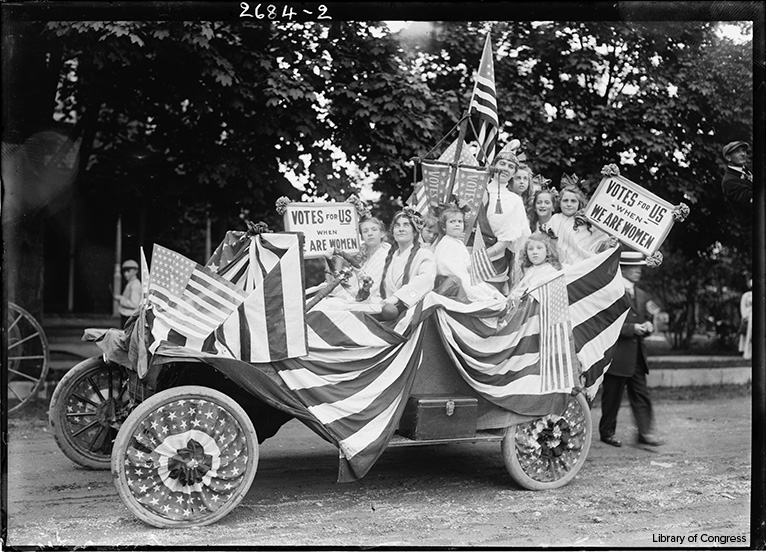
August 18, 2020 marked the 100th anniversary of the Nineteenth Amendment’s ratification to the Constitution. This amendment granted white women the right to vote. The struggle for white woman suffrage was finally achieved when Tennessee became the final state to officially ratify the amendment. Here, btw remembers the seventy-year effort needed to accomplish this important achievement.
A Brief History of the Movement
The first women’s rights convention–held in Seneca Falls, New York, in July 1848–is often credited as the official beginning of the road to woman suffrage. There, key leaders drafted the Declaration of Rights and Sentiments, which contained eleven resolutions to further gender equality. (Of the eleven resolutions, only the right to vote caused debate among attendees.) The woman suffrage movement and the movement to abolish slavery included many of the same key leaders: Susan B. Anthony, Elizabeth Cady Stanton, Lucretia Mott, Sojourner Truth, Harriet Tubman, and Frederick Douglass.

Much like the long battle to end slavery, the woman’s suffrage movement took many decades of slow, steady, sometimes frustrating organization and protest. Reformers had greater success in getting state-level laws passed giving women the right to vote, but they never gave up on the hope for a nationwide Constitutional amendment. On November 10, 1917, thirty-three suffragists stood in front of the White House with picket signs. They were arrested, beaten, and given rotten food. When they tried to protest through a hunger strike, they were force-fed. Finally, in 1919, Congress approved the Nineteenth Amendment, with the states finally ratifying it by 1920. Ten million women voted nationwide in the 1920 election.
A Complicated Legacy
While the achievements of the women at the forefront of the woman suffrage movement should be celebrated, it is important to acknowledge the complicated history surrounding the movement. Though the suffragists were passionate about gaining the right to vote for women, many of them didn’t feel that the same rights should be extended to people of color. In fact, both Elizabeth Cady Stanton and Susan B. Anthony openly opposed the Fifteenth Amendment (1870), granting African American men the right to vote.
The suffrage movement’s leaders did not easily include African American women in their struggle for woman suffrage. African American suffragists often were forced to walk at the back of protest marches and public parades.
How Will the Anniversary be Celebrated?
Last week, President Trump recognized the day with an official Proclamation, honoring the ongoing economic, social, and political contributions of women. The proclamation also noted some key initiatives the administration has taken to advance the rights of women–such as the Women’s Global Development and Prosperity Initiative. This initiative advances women’s economic empowerment around the world, and the Strategy on Women, Peace, and Security increases women’s political participation).
As a lasting memorial to the movement, this week in Central Park, sculptor Meredith Bergmann will unveil the new Women’s Rights Pioneers Monument, a fourteen-foot tall bronze statue of three suffragists: Sojourner Truth, Susan B. Anthony, and Elizabeth Cady Stanton. This statue is especially significant because it is the first one in Central Park to portray real women. Bergmann made the choice to show the women not relaxing, but instead, actively writing and discussing together.
